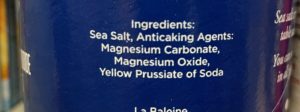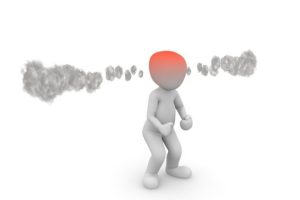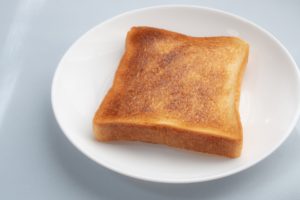Additives in Salt?
Have you ever felt hot and flashed without finding an explanation? Women around menopause are well aware of hot flashes but I felt it for years, at a stage in my life when this explanation didn’t apply. I heard similar reports from others in the same situation. What can cause it?
The other puzzling feature is that it wasn’t even happening on a regular basis, it was random. To make it more puzzling, I know men who complained about feeling hot as well, although the flashed feeling was less pronounced. Regardless, it’s annoying for anyone each time it happens.
I did find an explanation that verifies for me over and over and I’m ready to share it with you. It has to do with an additive in salt. You probably frown just now asking: Wait, what? Are there additives in salt?
They’re called anti-caking agents and are used quite a bit in fine salt, in order to prevent clumps from forming. Here are a few of some common ones:
- sodium silicate
- sodium aluminosilicate—also added to flour, premixed baking powders, dried milk
- sodium bicarbonate
- calcium carbonate
- magnesium carbonate
- aluminium silicate
- powdered cellulose
Because they add extra weight, they don’t just eliminate the clumps, but likely bring more profit for the manufacturers, compared to pure salt (which is sodium chloride). The additives are probably responsible to not release the sodium as quickly as the actual salt, hence the delay in obtaining the taste you’re looking for.

Reading some of the names I listed, you noticed some don’t even have sodium in their structure. This can make you think that’s better for people who shouldn’t have much salt in their diet. But when you don’t obtain the taste you’re looking for, you may be tempted to add more and end up eating saltier foods.
Have you also noticed the food doesn’t get salty enough for the amount you added, but the next day becomes way saltier than expected? Thus, people end up eating saltier foods because they will unlikely discard the left-overs, especially in this time of need.
Moreover, if the additives in salt contain potassium, that’s a problem for people with kidney disease. These are also affected by the additional aluminum, especially if the renal function is significantly impaired. Keep in mind that many people and probably their doctors as well, are puzzled about the sources of the excessive amounts.
Aluminum is not a natural component of our body, it’s a toxic metal that can accumulate in the brain, bones, kidneys and liver. It also acts as a foreign estrogen hormone.
Let me get back now to the additive that got me started to read salt labels, the one responsible for the hot flashes I was referring to. It is called yellow prussiate of soda or sodium ferrocyanide and you see it listed in the picture I have below. Don’t worry, it is not a cyanide poison!
This is the culprit that gave me trouble about 8 years ago and took me a bit to pinpoint it. When I researched it, I learned that its structure resembles one of the medications called sodium nitroprusside,  used in treating high blood pressure emergencies.
used in treating high blood pressure emergencies.
One of the known side-effects of this medication are hot flushes, or just feeling hot, and headaches. I used to feel these when I wasn’t aware what’s in my salt, but after I learned and switched to pure salt, this only happens when I order take out foods from specific restaurants. It never fails, unbelievable!
Look out for additives in salt and don’t miss the yellow prussiate of sodium. It can be added to many brands, including in sea salt, but it has to be disclosed on the label. If you experienced what I describe and replace the salt you use at home, monitor yourself and see if the hot flashes improve.
Using pure salt has another advantage : we know exactly how much sodium we use. The additives, even when listed on the ingredient labels don’t have specified amounts. Sure, the manufacturers follow certain recommendations—usually “do not exceed” limits, but these cannot be reinforced by law. Only regulations can! Therefore, we add more additives to the food we cook, rather than actual salt (sodium chloride).
: we know exactly how much sodium we use. The additives, even when listed on the ingredient labels don’t have specified amounts. Sure, the manufacturers follow certain recommendations—usually “do not exceed” limits, but these cannot be reinforced by law. Only regulations can! Therefore, we add more additives to the food we cook, rather than actual salt (sodium chloride).




